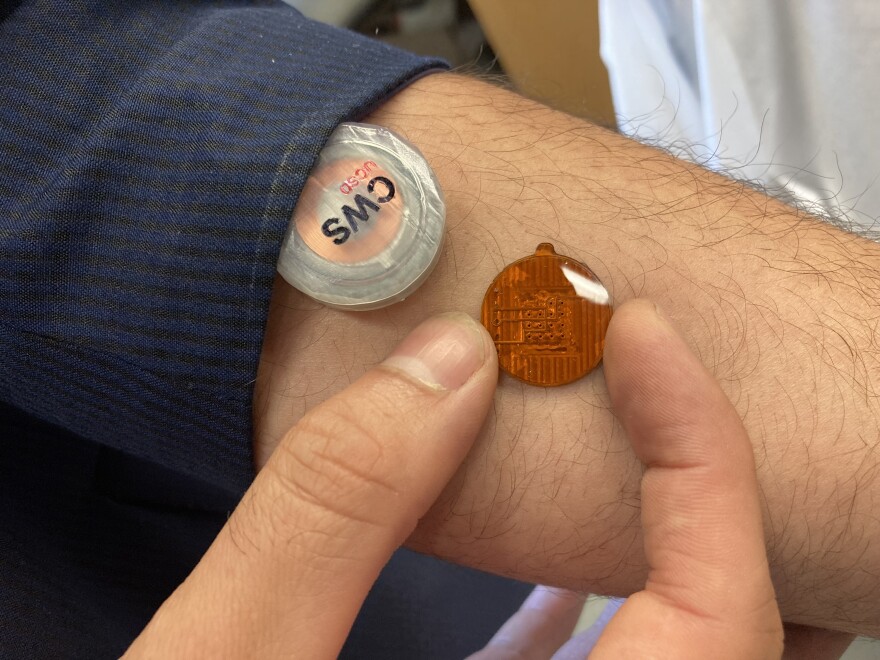The wearable monitor is about the size of a short stack of quarters, though its creators want to shrink it as they develop the product. It’s called a “microneedle patch” — it’s placed on the body and its tiny pins just barely enter the skin to test interstitial fluid for glucose, alcohol and lactate.
Will it be successful and make a difference in people’s lives?
“We have big dreams,” said Farshad Tehrani, a nanoengineer who is the CEO of the startup company AquilX.
“We’re talking about 450 million diabetic patients (worldwide) who are dealing with diabetes. So, it can make a difference to easily and consciously manage their eating and their exercise (habits) by simply seeing what their glucose levels are at any given moment,” he said.
Tehrani grew up in Iran, and he remembers his mother having to prick her finger to monitor glucose levels in her blood. She was a type-2 diabetic. Tehrani said the process was cumbersome and painful, and it made him want to find a better way.
Wearable glucose monitors already exist. It’s often a small needle lodged somewhere under the skin.

Tehrani said they are creating a product that’s less invasive, and that monitors things other than just glucose. It continuously tests interstitial fluid (ISF), which is found between cells and which closely mimics the blood when it comes to multiple substances.
Why also test for lactate and alcohol? Lactate is a biomarker for sepsis, a potentially deadly reaction to infections. Testing blood-alcohol levels has several uses, some of them fairly obvious.
“People go to a party and then they want to know if they can drive!” said Tehrani.
The monitor sends data wirelessly to a specially designed app, so users can continuously monitor these metabolites.
Tehrani has two partners in his company, who have played different roles in developing the product. One of them is chemist and fellow Iranian Hazhir Teymourian. He said the monitor is something that could take personalized, at-home medicine to a new level.
“I can tell you this is just the beginning of this story,” Teymourian said as he spoke of their goals to be able to test even more biomarkers.
“We have this phrase ‘lab under the skin,’” added Tehrani. “So that people in their homes have access to this artificial intelligence … and can get the care that they really deserve.”
The micropatch created by AquilX still has some hurdles to clear.
The scientists with AquilX have co-authored and published a paper in the academic journal Nature Biomedical Engineering. In the paper’s abstract, it says the monitor will require “further validation in large populations” and more tests to check the “robustness and utility of real-time monitoring of several biomarkers.”







